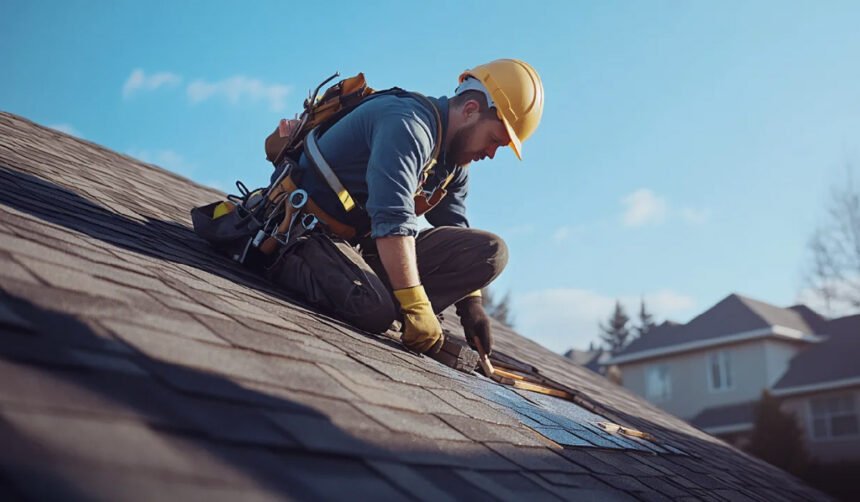Roofs are often the unsung heroes of our homes and buildings—enduring sun, wind, rain, and snow while rarely being noticed until something goes wrong. While a pristine floor or newly painted walls might catch your eye, a roof’s performance is largely invisible—until a leak, sag, or draft forces you to pay attention. And when that time comes, roof repair becomes not just a maintenance task, but a priority that can determine the safety, comfort, and longevity of your entire structure.
Despite being a crucial component of any building, the roof is often one of the most neglected parts. But like any system exposed to the elements day in and day out, it wears down over time. The earlier problems are caught and corrected, the better the outcome. Let’s dive deep into why timely roof care matters, how damage can often go unnoticed, and why understanding the process of roof repair is essential for any property owner.
Why Roofs Fail: The Inevitable Impact of Time and Nature
Even the best-constructed roofs are not immune to deterioration. The effects of heat, UV radiation, wind uplift, heavy rains, snow loads, and falling debris can cause materials to weaken and fail. And because much of the wear occurs slowly and silently, it’s easy to miss until it’s too late.
Most roofing materials—whether asphalt shingles, metal, tile, or synthetic composites—have a defined lifespan. Yet actual roof performance depends not just on materials, but also on installation quality, ventilation, slope, and climate conditions.
Small cracks, missing granules, warped shingles, loose flashing, or minor leaks may not seem serious at first. However, left unaddressed, they can quickly evolve into major structural problems. Water intrusion, especially, can be catastrophic. It doesn’t just damage roofing materials—it can affect insulation, wooden supports, electrical systems, and even indoor air quality due to mold or mildew.
This is why routine inspections and preventive care are essential. Even if your roof looks fine from the ground, there may be underlying problems only a trained eye can detect.
Signs You Might Need Roof Repair
The earlier you detect issues, the easier and less expensive they are to fix. Here are some common signs that suggest your roof might be compromised:
- Water stains on ceilings or walls: A clear indicator of moisture intrusion.
- Missing, cracked, or curled shingles: Often caused by wind damage or aging.
- Moss or algae growth: Can indicate trapped moisture and deteriorating shingles.
- Sagging or uneven roof lines: May point to structural issues or water damage.
- Loose or rusted flashing: Weakens the roof’s ability to keep water out at joints and edges.
- Peeling paint or damp patches near the attic or walls: Suggest poor ventilation or leaks.
In some cases, symptoms may appear far from the source of the issue. Water can travel along beams and insulation before revealing itself in ceilings or walls, making it crucial to find and fix the root cause rather than just treating the symptom.
Common Causes of Roof Damage
Understanding the causes of roof issues can help in preventing them. Here are the most frequent culprits:
1. Weather Extremes
Severe storms, hail, snow, and high winds can cause both immediate and long-term damage. Even routine temperature fluctuations can lead to expansion and contraction that weakens materials over time.
2. Poor Installation
Even the best materials can fail prematurely if not installed correctly. Gaps, incorrect overlaps, or poorly placed nails can leave the system vulnerable.
3. Lack of Maintenance
Neglected roofs often suffer from clogged gutters, ponding water, or unchecked small damages that worsen over time.
4. Age and Material Fatigue
All roofing materials age. Over time, they lose their flexibility, waterproofing capability, or strength. Knowing your roof’s age helps in planning timely inspections and maintenance.
What Happens During a Roof Repair
Once a problem has been identified, a professional team will typically follow these steps:
- Inspection and Diagnosis
A full inspection assesses the condition of the roof, identifies damage, and determines whether a repair or full replacement is necessary. - Estimate and Planning
The contractor provides a detailed scope of work, outlining what needs to be fixed, the timeline, and the cost. This includes labor, materials, and cleanup. - Material Selection
If new shingles, tiles, or components are needed, selections are made based on compatibility with existing materials and long-term durability. - Repair Execution
This may involve replacing damaged shingles, fixing underlayment, resealing flashing, or correcting drainage issues. High-quality workmanship is essential to ensure long-lasting results. - Final Inspection and Cleanup
Once the work is completed, a final check ensures everything is sealed, secure, and up to code. Any debris is removed, leaving the site clean.
Working with a reputable company ensures that repairs are handled efficiently and effectively, minimizing the risk of future issues.
Why Roof Repair Is a Smart Investment
At first glance, repairing a roof may seem like a cost you’d rather avoid. But viewed from a long-term perspective, it’s one of the most financially sound decisions a property owner can make.
Here’s why:
- Preventative savings: Small repairs now prevent large, expensive overhauls later.
- Energy efficiency: A well-maintained roof reduces heat loss in winter and keeps your home cooler in summer.
- Insurance protection: Neglected maintenance can void insurance claims in case of major damage.
- Property value: A solid roof adds to the market appeal of your home.
- Peace of mind: Knowing your home is protected from the elements is priceless.
Even if your roof is relatively new, routine maintenance and timely roof repair when needed are key to getting the full lifespan from your investment.
Choosing the Right Team for the Job
Not all contractors are created equal. Here’s what to look for in a reliable roofing professional:
- Licensing and insurance: Make sure they’re certified to work in your area and carry liability and worker’s compensation coverage.
- Experience: Look for a company with a proven track record and strong portfolio.
- References and reviews: Positive feedback from previous clients speaks volumes.
- Detailed estimates: The contractor should provide clear, itemized costs and timelines.
- Warranties: Reputable companies stand behind their work with solid warranties on materials and labor.
Don’t be afraid to ask questions. A trustworthy provider will explain the process, provide documentation, and answer any concerns you have about the scope of the roof repair.
Maintenance: The Best Form of Protection
Repair is important, but prevention is even better. Scheduling regular inspections—especially after major weather events—can help you identify risks before they become problems.
Consider implementing a seasonal checklist:
- Clean gutters and downspouts
- Trim overhanging branches
- Check for visible damage or debris on the roof
- Inspect attic for signs of leaks or mold
- Look for daylight through roof boards
- Ensure proper ventilation and insulation
Maintaining your roof doesn’t have to be complicated. Partnering with professionals for annual inspections can give you confidence and keep your home protected year-round.
Final Thoughts
Your roof is one of the most critical components of your home. It’s the first line of defense against the elements and a major factor in your property’s comfort, efficiency, and value. Ignoring minor problems can lead to major disasters—but timely, professional roof repair can restore security, prevent escalating costs, and even extend your roof’s lifespan.
Whether you’re dealing with a sudden leak or just trying to stay ahead of future issues, now is the right time to act. Regular maintenance, combined with prompt attention to small signs of damage, will help ensure that your roof continues doing its job—quietly and reliably—for years to come.
For More Information, Visit Dotmagazine








